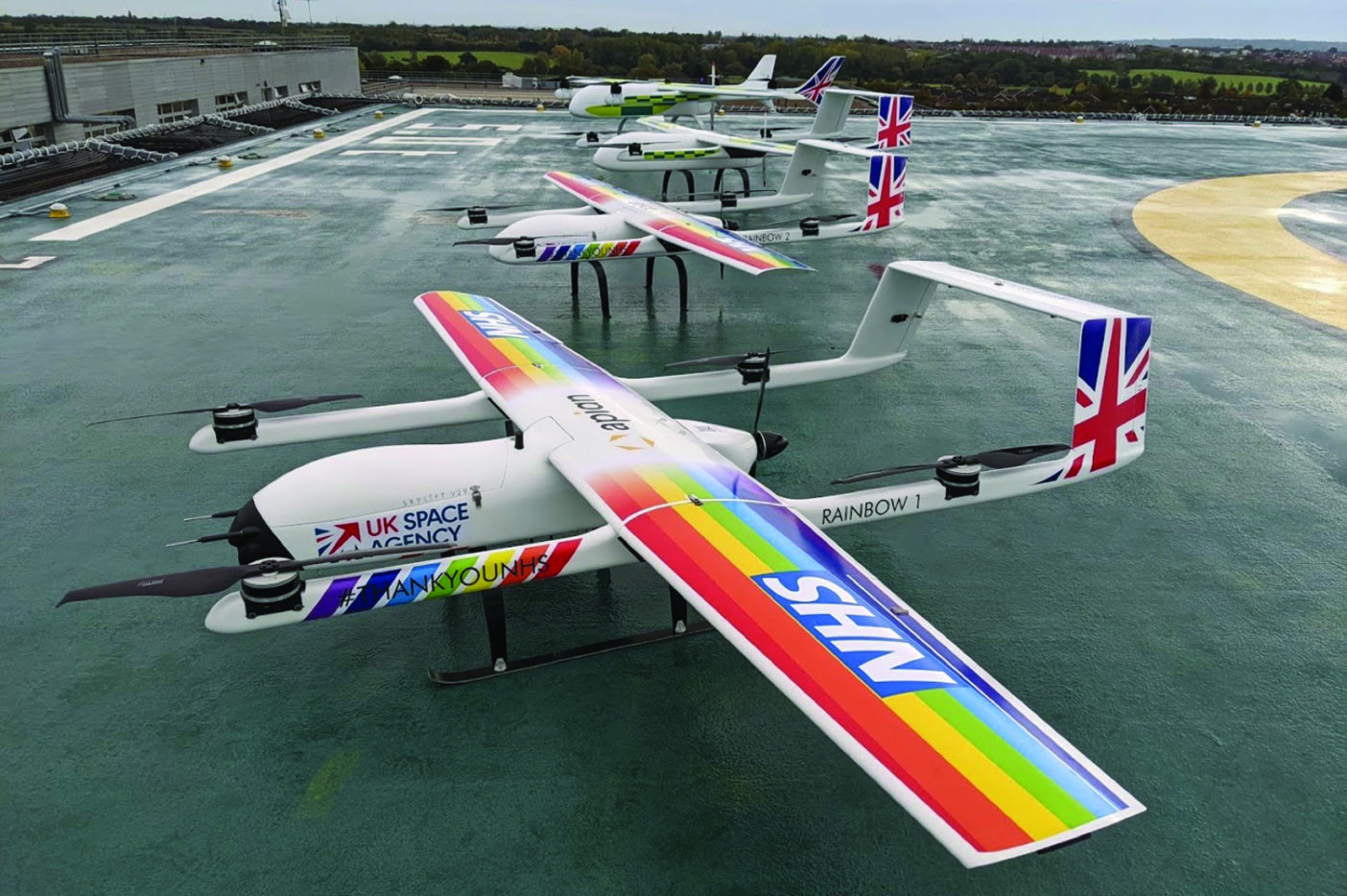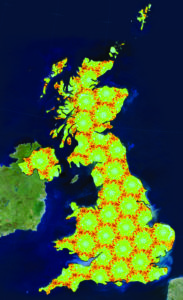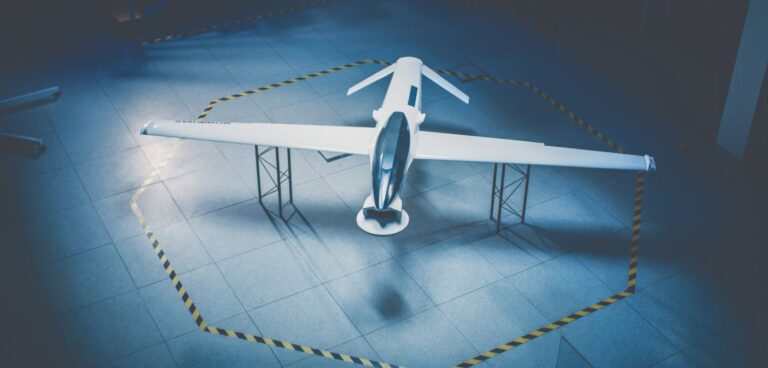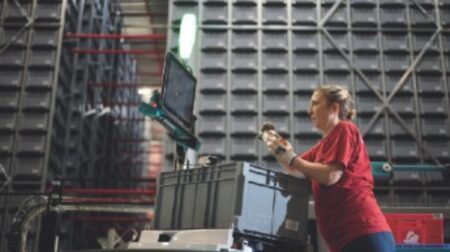With drone demand greater than ever before, can industry and regulators keep up with the opportunities, challenges and competition posed by the technology? Katie Searles investigates…
Whilst drones are still a relatively new technology, the appetite for using these unmanned aircraft in industries across the UK has soared in the last 10 years. In 2010 there were five Civil Aviation Authority (CAA) approved commercial operators – there are now over 6,000.
With UK businesses under pressure to be more efficient, collect more data and, in some cases, control human risk factors, many organisations are starting to embrace drone technology. But as industries including oil and gas, construction and even emergency services look at scaling up drone applications, the regulations surrounding unmanned aerial vehicles (UAVs) hastens to keep up.
The CAA has therefore undertaken a programme of strategic realignment to help close the gap. David Tait, head of innovation at the CAA, says: “The trend for commercial application of remotely piloted and fully autonomous aircraft is a growing one. That is big challenge for any regulator to respond to and my team has been set up to take a long-term view.
“We do a lot of horizon scanning, a lot of engagement with the industry to see and understand the useful applications of these new technologies and how the CAA has to change its business to respond.”
Thus, the organisation, which oversees all aspects of civil aviation in the UK, will look at not only future licensing regimes but also the type of ground infrastructure required for commercial drone roll out in the UK.
According to Tait, the CAA will also work alongside other regulators such as Offcom, which regulates the communications systems that are often involved in UAVs, and energy regulator Offgen to set policy around what will be the future of electric vehicles, including aerial vehicles.
“The challenge is always going to be that industry has a significant appetite to move faster than any regulator ever could,” admits Tait. However, it is through a candid and honest relationship between the regulator and industry that he believes will allow expectations to be met.
Furthermore, the CAA is of the belief that tests and trials will help build an evidence base of safe operations of UAV technologies, enabling a scale-up while demonstrating to the public that drones are safe.

On the front line
The coronavirus pandemic has provided such an opportunity to trial drone technology and demonstrate how front-line services such as the NHS can adopt UAVs as a public service delivery tool.
One project, Apian, is working to create secure air corridors for electric drones that could carry test-kits, Covid-19 samples and PPE.
The start-up, founded by NHS doctors in training, aims to develop a nationalised air grid connecting every health care facility in the country. Apian co-founder Christopher Law says this will enable patients and clinicians to access more healthcare facilities regardless of where they are in the country, thereby reducing the healthcare postcode lottery.
“There are is an opportunity for us to be leading this whole industry because we have the nationalised health service, which in itself lends so much support,” says Law. “Other countries around the world are following the evidence base of the NHS. With this use case, it creates the perfect testbed in the UK to provide a nationwide autonomous drone service.”
Apian’s drone will be based at Broomfield Hospital in Essex, which stands on a First World War Royal Flying Corps airfield. It is one of three projects to receive backing from the UK Space Agency.
There have also been trials in Southampton and off the West coast of Scotland by drone delivery service provider Skyports. In the Scottish trials, the company linked up two hospitals in Oban with community hospitals on the Isle of Mull and Iona. Featuring a drone supplied by Wingcopter, the trials saw PPE and other medical equipment delivered on an as-needed logistics basis.
And according to Apian, Covid-19 has been a catalyst for take-up and acceptance of UAV and remotely piloted aircraft system (RPAS). Law adds: “Before Covid hit, if you had said you wanted to use drones to deliver samples you would have been laughed off the table. Covid has really accelerated everything.”
The sudden need for advancement of drone technology to help in the fight against Covid-19 has also been recognised with UK government investment. For example, the Future Flight Challenge, part of the Industrial Strategy Challenge Fund, delivered by UK Research and Innovation, will see £33.5m distributed among 48 projects developing electric and autonomous air vehicles.
In November 2020, the first 20 projects, comprising private sector companies, start-ups and universities, received over £7m in funding. As well as covering the use of drones capable of delivering Covid-19 medical supplies to remote areas, the projects comprise technology to enable remote inspections of infrastructure and construction sites, as well as to tackle air management challenges.
It’s hoped that funding of these projects will ensure the UK maintains its exceptional air safety record and delivers practical integrated solutions. “These bold proposals showcase the pioneering spirit of the UK’s aerospace and aviation industrials in solving global issues from climate change to getting vital medications to those in need,” said UK business and industry minister Nadhim Zahawi at the time of the launch.

Digital delivery
While harnessing drone technology for the delivery of essential PPE and medical equipment in 2020 highlighted how such systems can help reach remote locations and underserved communities, one particular start-up is aiming to utilise UAVs as a means of bolstering the UK’s broadband cellular networks and to help solve connectivity challenges.
Based in Great Abington, Cambridgeshire, Stratospheric Platforms is developing a high-altitude pseudo-satellite UAV that is capable of remaining airborne at an altitude of 20,000m for more than a week. An antenna system designed by Cambridge Consultants and embedded into the UAV will create 480 individual beams to provide even coverage of 5G to areas up to 87 miles in diameter.
According to Richard Deakin, CEO of Stratospheric Platforms, the hydrogen-powered High Altitude Platform, which has a wingspan similar to that of a jumbo jet (60m) and a payload of 140kg, has the potential to supply the whole of the UK with 5G coverage.
“We have done a lot of modelling of Great Britain and we think it would take around 60 to 70 of the vehicles to cover the entire country,” says Deakin. “We’d essentially be operating a small airline.”
The aircraft, which would operate out of Prestwick in Scotland, can stay in the stratosphere for nine days and deliver a steerable beam capable of covering areas such as the M25 or even an entire city. By bolstering the UK’s 5G network, the increased connectivity could be used to follow traffic during the morning rush from the suburbs into the city and to follow commuters back out again in the evening. What’s more, it can also be increased to cover a stadium to support large events such as a football match.

Stratospheric Platforms plans to deliver superfast 5G at a fraction of the cost of building and maintaining terrestrial infrastructure and claims the platform will deliver minimal environmental impact due to being hydrogen powered. However, before the platform can enter service in 2024, more regulatory clarity is required, admits Deakin.
“With unmanned aircraft, and a lot of technology, it is not just about advancing the technology it is also about advancing the thinking of regulators,” he explains. “At the moment, if I look at the rules and requirements for UAVs, you have to have one pilot, if you like, albeit based on the ground for one unmanned aircraft.
“If we have 60 or 70 UAVs up in UK airspace that is quite a lot of ground-based pilots. If these things are sitting up flying around in circles for nine days, you don’t really need a pilot overseeing that. You may need more human oversight when the aircraft is taking off and coming back but all of this will need to be worked out with the regulators.”
Perception is reality
One aspect that both industry and regulators agree on for drones to operate successfully in the UK is public perception. Exposure to the technology will be fundamental and, according to the CAA’s David Tait, staging as many flights as possible will only help build more trust in the platforms.
“The public needs to be taken on a journey from the very start of building these new products and services,” he says, before adding that consideration of how to deploy these technologies in overflowing communities is also required.
The CAA is of the opinion that further discussion is needed on how these services will affect not only those who opt in to use them but also bystanders. Tait says a broad social consensus is required and there needs to be an appetite to have drones in the UK.
“What we are looking for in terms of innovation is not that we do things first in the UK but that we do them best,” he says. “And that means the technology and business models that we deploy in the UK are both cutting-edge and sustainable – socially and economically – and meet the needs of our society.”
Opportunity on the horizon
There is increased appetite for low-space innovation and investment into the fast-track testing of robots and drones in the UK, according to a European aerospace study.Protolabs’ Horizon Shift report involved 325 aerospace businesses in Europe and found that 78% of companies questioned from the UK believe that disruption in the form of drones represents the sector’s best opportunity for future growth. This figure from the UK outperformed its peers in Italy (75%), France (64%) and Germany (57%).
The study also citied challenges posed by Covid-19 as a key driver accelerating the viability and acceptance of the technology. More than half of companies questioned (53%) believe commercial drone deliveries will be commonplace by 2023, as the public and private sectors seek safe ways to guarantee services whilst containing the spread of any viruses.
“Covid-19 has brought huge disruption to the global economy, with the aerospace sector being among the hardest hit,” says Bjoern Klaas, vice president and managing director of Protolabs Europe. “However, a crisis can act as a catalyst for further innovation, forcing organisations to seek alternative ways to survive in rapidly changing times.
“Commercial drone deliveries are the most likely disruptor and this was reinforced across the duration of our study, which was carried out as the Covid-19 pandemic started to take grip. In just a few weeks, the appetite for this technology increased by 11% to 53%. Depending on legislation and advances in technology, it’s feasible that last-mile delivery of products, through drones, could reach up to 30% of citizens across Europe.”
Despite the positive outlook, obstacles stand in the way of companies operating in low space: cost of initial investment over return on investment is seen as the biggest challenge by a third of respondents, followed by technology integration and issues caused by inflexible supply chains. Detailed testing programmes and product development cycles were cited as the main barriers to innovation, whilst risk management and an inability to learn from failures could also stifle progress.
More than a third of companies surveyed said they want investment in STEM education, improved international regulation/collaboration and increased government support.
This article originally appeared in the January 2021 issue of Robotics & Innovation Magazine








